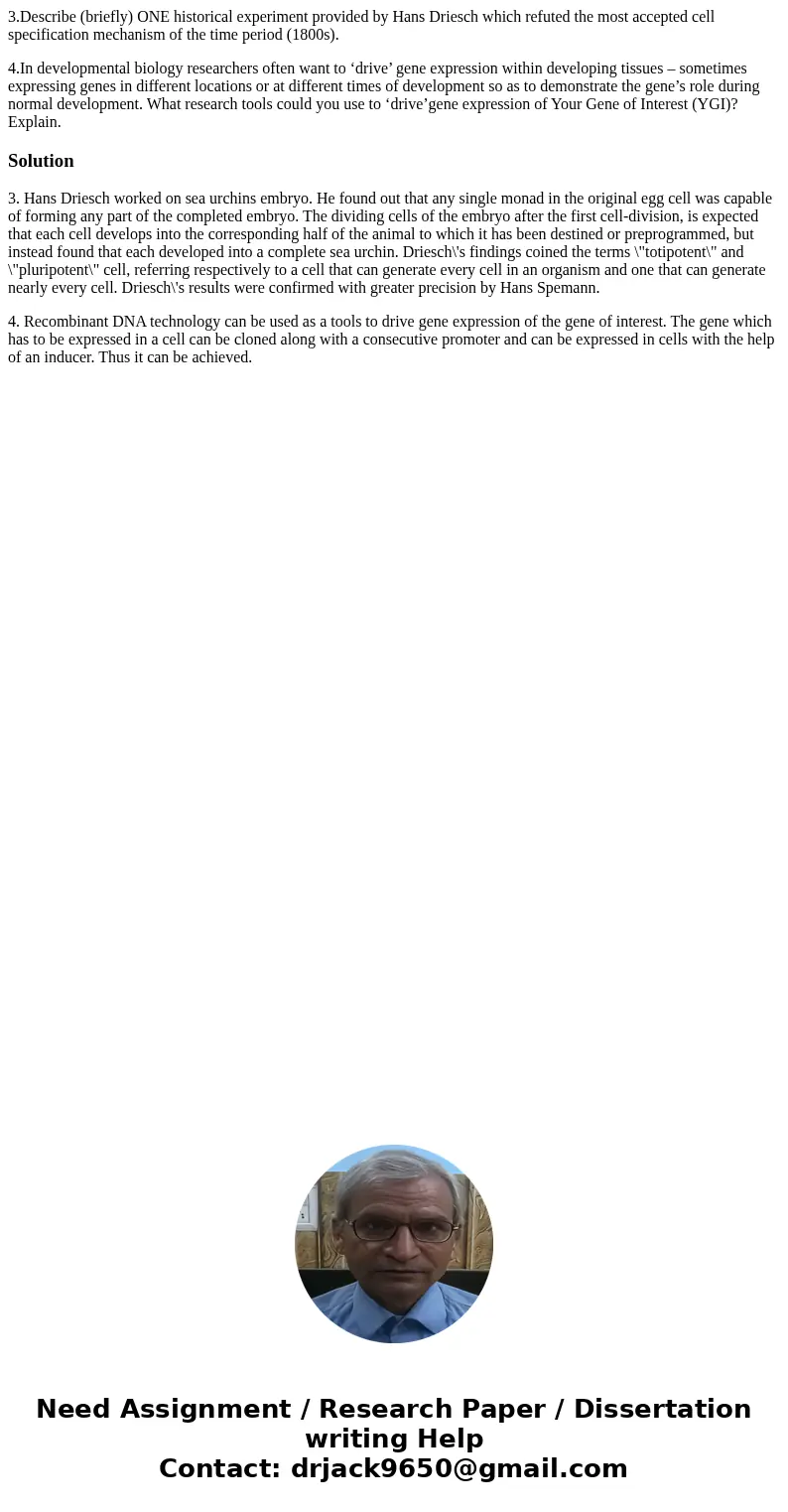3Describe briefly ONE historical experiment provided by Hans
3.Describe (briefly) ONE historical experiment provided by Hans Driesch which refuted the most accepted cell specification mechanism of the time period (1800s).
4.In developmental biology researchers often want to ‘drive’ gene expression within developing tissues – sometimes expressing genes in different locations or at different times of development so as to demonstrate the gene’s role during normal development. What research tools could you use to ‘drive’gene expression of Your Gene of Interest (YGI)? Explain.
Solution
3. Hans Driesch worked on sea urchins embryo. He found out that any single monad in the original egg cell was capable of forming any part of the completed embryo. The dividing cells of the embryo after the first cell-division, is expected that each cell develops into the corresponding half of the animal to which it has been destined or preprogrammed, but instead found that each developed into a complete sea urchin. Driesch\'s findings coined the terms \"totipotent\" and \"pluripotent\" cell, referring respectively to a cell that can generate every cell in an organism and one that can generate nearly every cell. Driesch\'s results were confirmed with greater precision by Hans Spemann.
4. Recombinant DNA technology can be used as a tools to drive gene expression of the gene of interest. The gene which has to be expressed in a cell can be cloned along with a consecutive promoter and can be expressed in cells with the help of an inducer. Thus it can be achieved.

 Homework Sourse
Homework Sourse